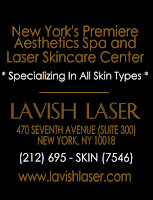PIMPLES: A REFLECTION OF YOUR OVERALL HEALTH STATUS

Acne is a common skin problem that starts when oil and dead skin cells clog up the skin’s pores. If germs or bacteria get into the pores, the result can be swelling, redness, and pus.
According to Traditional Chinese Medicine (TCM), the location of every acne lesion or group of lesions is an indication of what is happening regarding your general, inner health condition. Traditional Chinese Medicine explains why acne lesions emerge out from a particular section of your face. This makes your face a “reflection to your health”. Consider the following recommendations on the treatment of acne from the reflection of your inner health status:
(A) Upper Forehead
This section of the face is directly corresponding to your gastrointestinal or digestive system, with specific mention to the bladder and large intestine. These organs are generally responsible for removal of waste products via urine and stool, respectively. Acne popping up in this region of the face reflect 
To remedy this problem from the perspective of your inner core health, try to include more foods containing antioxidants (fruits and vegetables) and drinking more water or green tea into your diet. In its simplest form, performing these two steps constitute a detoxification process. As a result, this will help reduce toxin level buildup in your body.
(B) Lower Forehead
This section of the face is associated with your mind and spirit. Therefore, acne lesions popping out from the lower forehead may reflect situations pertaining to poor blood circulation, clinical depression, stress, or irregular sleeping patterns (insomnia), just to mention a few examples.
Although easily said than done, try to find ways to reduce stress on your mind. Such activities include enjoy watching a good movie or television program, yoga, meditation, exercise, taking a long, hot bath before bed, or socialize with friends for the day. And of course, getting the proper amount of sleep per night, approximately eight (8) hours of quality “snooze” time.
(C) Eyebrows
This section of the face corresponds to the liver organ. Acne lesions erupting along the eyebrows reflect a diet high in fat content or excessive alcohol intake. To remedy this problem, try to consume healthier snacks and to reduce too much “happy hour” drinks.
(D) Ears
Acne lesions appearing on your ears indicate you need to pay attention to the kidney organs. Problems with the kidneys are usually caused by dehydration, or rather, not drinking enough water to flush out the toxins accumulated in the body. Too much salt and caffeine consumption in your diet also contributes to kidney problems. To remedy this problem of acne lesions on your ear(s), ensure to consume plenty of water throughout the day, and to reduce your sodium and caffeine intake. As a result of doing this, it will help purify your kidneys, and in turn, clear away the acne popping out on the ear.
(E) Nose
This section of the face is associated with the heart organ. If you have acne lesions showing up here, then they are caused by situations of high blood pressure and stress. To remedy this, get your blood pressure checked and monitored. If it is elevated, seek medical attention to help control and reduce the pressure. In order to “de-stress”, follow examples as outlined in section “B” under “Lower Forehead”. So, RELAX!
(F) Right Cheek
This section of the face corresponds to the lung organ. Any respiratory illness or stress, allergies, or smoking are a few examples of acne lesions appearing on the surface of the right cheek. Thus, if you have acne lesions located here, then start taking care of your respiratory system by avoiding polluted air and avoiding any exposure to any allergens that may induce or trigger your allergy symptoms.
(G) Mouth and Center of Chin
Acne lesions appearing in these areas corresponds with your stomach and small intestines. This is usually a reflection of a diet consuming too much fast foods or being constipated. To help clear up the skin from acne, reduce eating fast foods and select fresh foods instead. This includes foods high in fiber, fruits, vegetables, and grains.
(H) Sides of Chin
Acne lesions located here are related to the reproductive organs and kidneys. Some form of hormonal imbalance and menstrual cycle dysfunction are involved and should be fully evaluated. To correct the kidney problems, follow examples as outlined in section “D” under “Ears”.
In summary, “You are what you eat”. Your skin is a reflection of your health status from the core or inside. So the next time you notice an acne lesion that has erupted on your face, identify its location, and treat the underlying cause for a more resolving, clearer skin.
Written By : Dr. Steven Wong MD

Healthy skin
At LAVISH LASER Medical Spa, we are committed to excellence of your personalized skin care needs and education. Allow our professional aestheticians and licensed skin care therapists assist in helping you obtain a clear complexion, reduce the signs of aging, and achieve overall radiance and beauty. The experienced staff at LAVISH LASER Medical Spa are knowledgeable in treating skin of all colors and Fitzpatrick skin types. This is your opportunity for professional and comprehensive treatments in achieving your skin care needs and desires. Everyone can now have optimal skin beauty at LAVISH LASER.
Ask aboout our Isomer perfection peel










